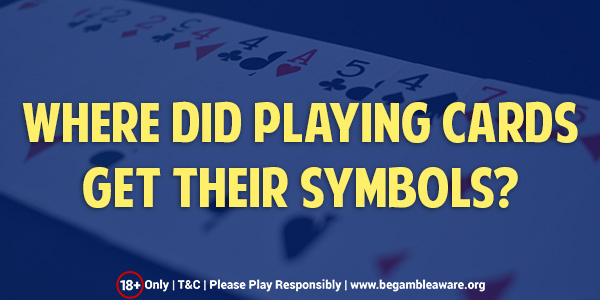The Journey of the Playing Cards Symbols
Card games have been around for centuries now and even after so many generations, people still find them intriguing to play. But there are really a bunch of people who would stop to care about the playing cards symbols. Those tiny symbols of the clubs, hearts, diamonds and spades at the corners of the cards are equally charming and hold history as old as the card themselves. Just like the way every other dynasty/country claims to have invented the cards games, the same case is true for the playing cards symbols. Read on to find more about the ravishing history of the playing cards symbols.

What the Playing Cards Symbols Looked Like Before Settling to the Current Ones?
Currently, the playing cards symbols look similar to the element they are named after. But if you look way back in days, these symbols differed highly, more often resembling or giving a meaning to their place of origin and culture. These included birds, animals, stars, goblets, wizards and such other fascinating items. Also, if you consider the 16th-century European symbols, these cards were responsible for preserving the epic iconography relating to alchemy, history, astronomy and mysticism.
Some of the Historians also propose that the suits in the card decks represented the Medieval society that was comprised of four classes. They reckon the cups and chalices (which are modern hearts) might have represented the clergy; the swords (which stand for spades in today’s times) could have been the depiction of the military or nobility; coins (modern-day diamonds symbol) symbolised the merchants and finally the batons (or the current clubs) meant peasants.
Variations of Playing Cards Symbols With Different Gaming Categories
These variations in decks were not just restricted in cards but they also had different categories too. Say, for example, there was a category known as “hunting cards” in the early German era which had the symbol known as Bells. During those times, the Germans used to attach the bells to the Hawks’ jesse’s while taking them out for falconry, a hutting sport which was reserved for the rich people of the Rhineland. Based on this, historians argue that the ‘bells’ could have been more similar to the ‘spades’ of the modern day cards, both of which depicted nobility in a way.
Contradictorily, the diamonds could have depicted the higher class of the French decks since the paving stones that were made use in the churches’ channels were diamond shaped. Also, these stones were used to mark the graves of the aristocratic people.
Back of the Cards
Even the back of the cards was subject to changes. In those times, gamblers wanted to have the back of the cards made out in a certain standard way that maintained symmetry. This is because the difference the in the symmetry could easily lead to the distraction. Also, the plain background of the cards which was maintained for almost 500 years was later changed in the 19th century. The plain back cards, many times carried marks or smudges which players could easily remember and later take advantage of. So in the 19th century, lithographic designs like stars, dots and other easy prints were printed on the backs of the cards by a British stationery and Print Company, De La Rue.
There were many other changes made in the playing cards symbols like the depiction of various kings and queens, addition of the wild cards and such. Joker was first introduced in 1867 in the American decks which were later followed by the British suits in 1880.
Review Summary
Review Name: The Journey of the Playing Cards Symbols
Posted On: 28/05/2019
Author: Emma Denton





